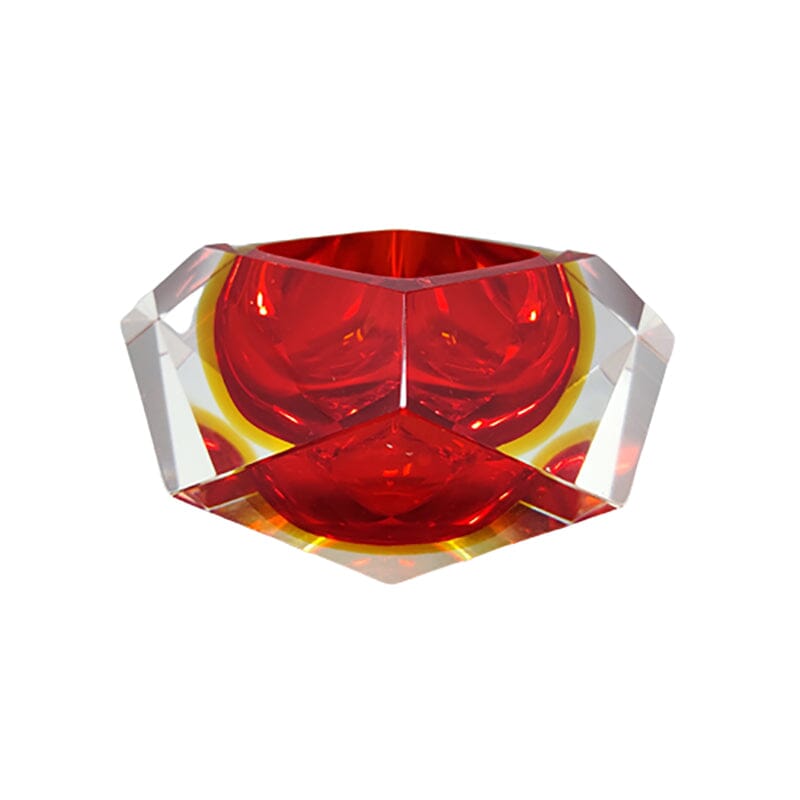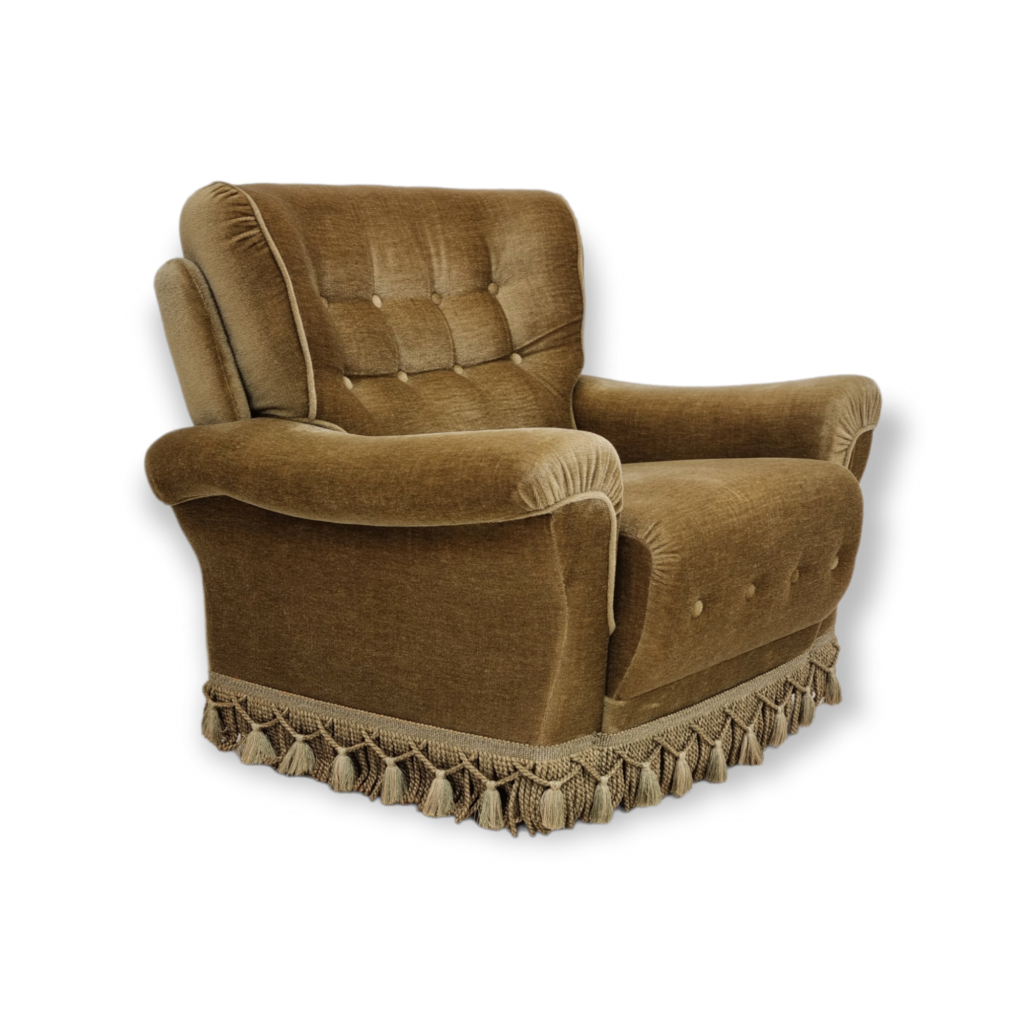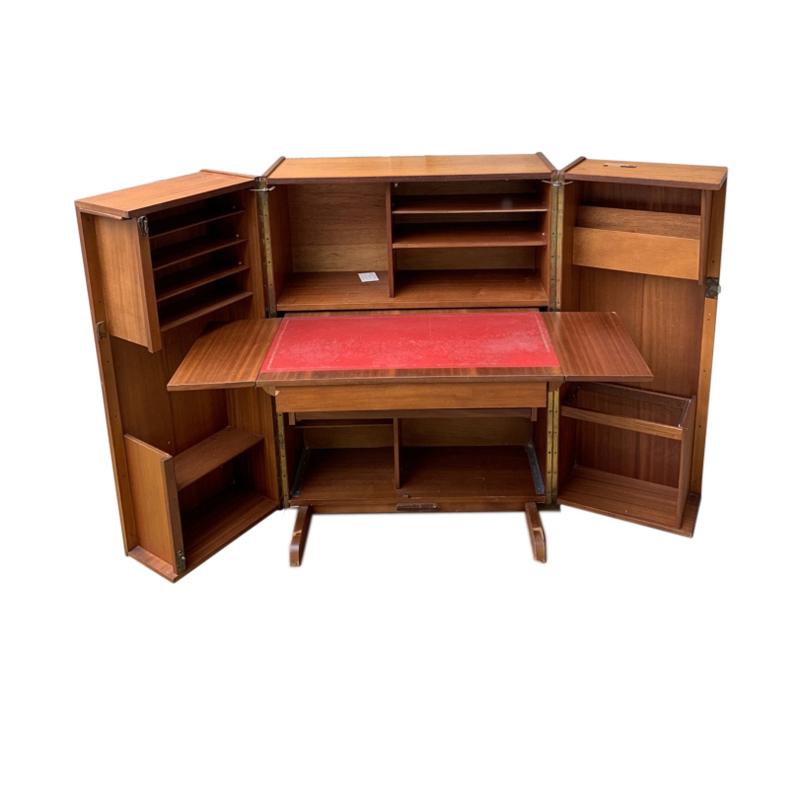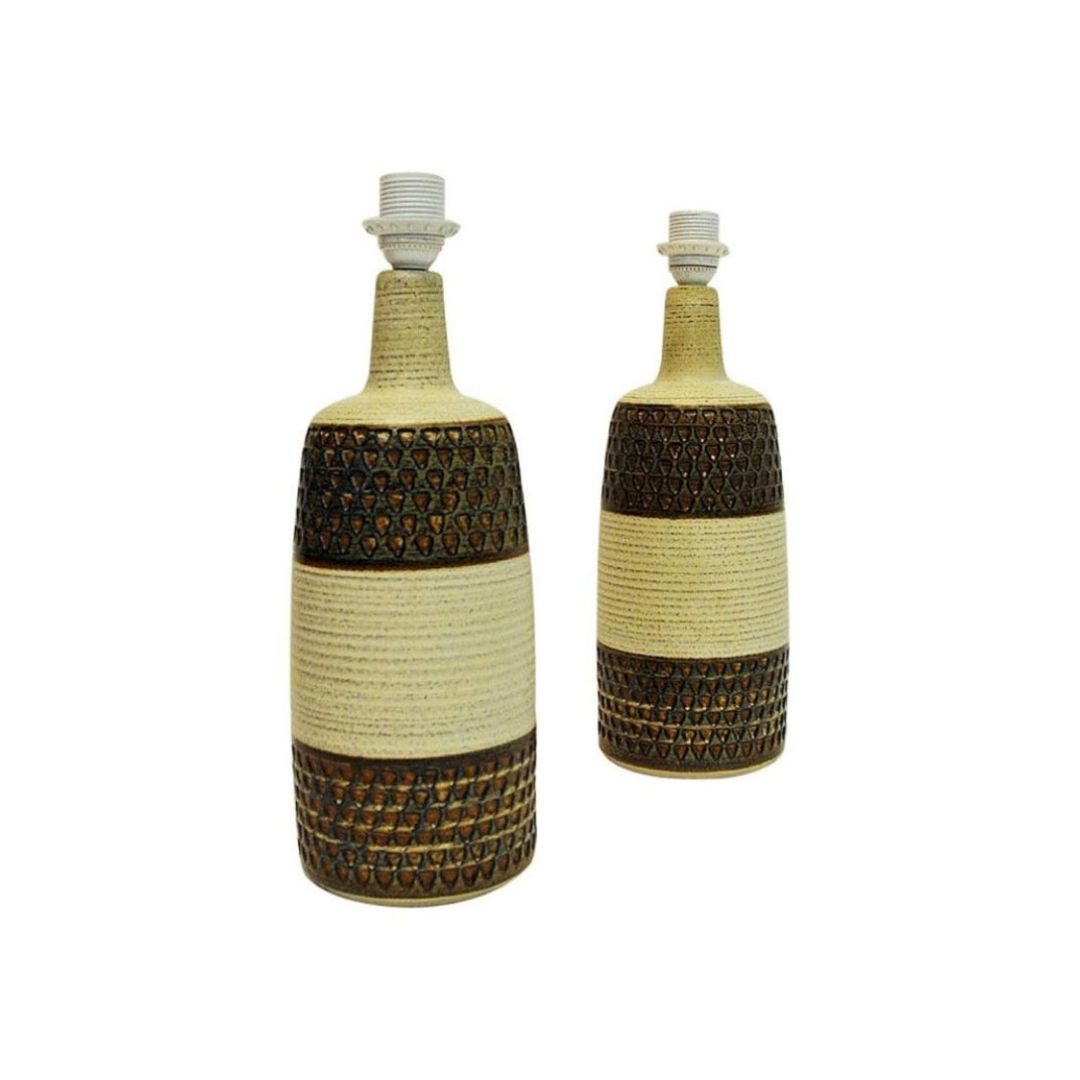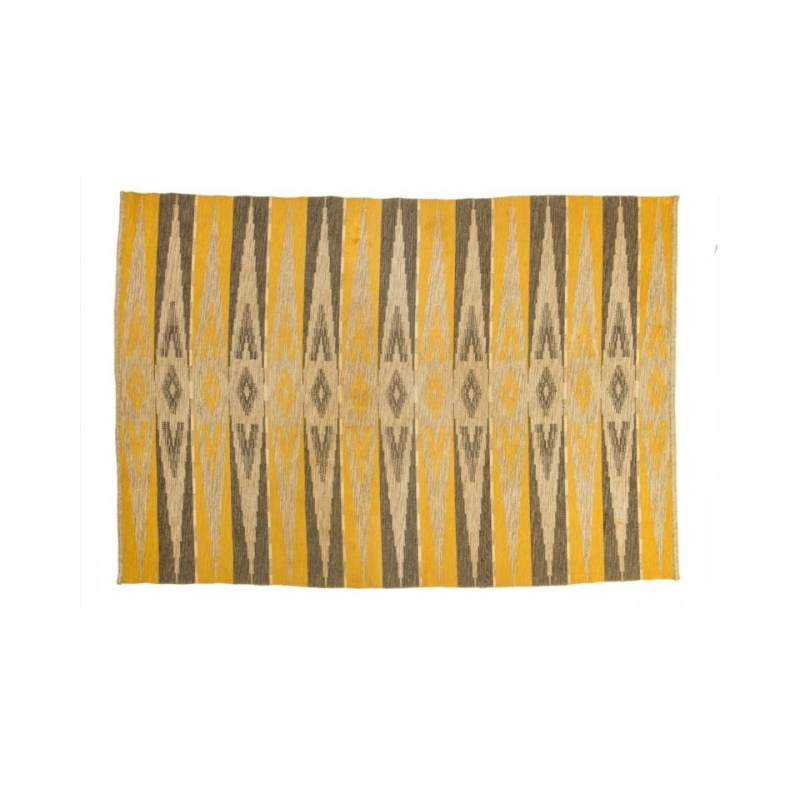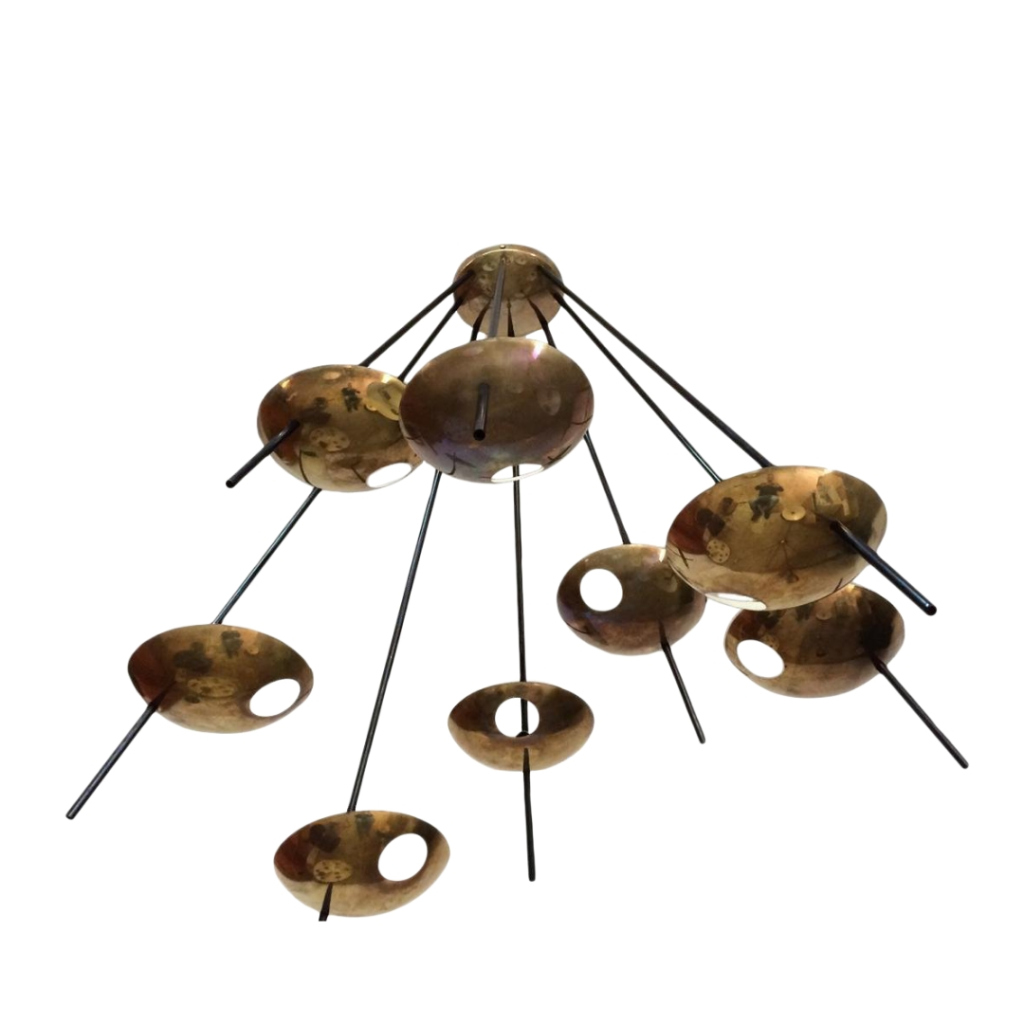I assume if the seat is fit as it is there should be 4 evenly set slats that I can weave around? I would think it's possible but looking for a more experienced opinion before I commit.
Any idea of the design on this chair? I'd like to do an internet search and see if I can find one that has been woven. <img class="wpforo-default-image-att
<img class="wpforo-default-image-att
I don't know who designed or made the chairs but I've never seen them with paper cord seats. They probably have rabbeted rails for the upholstered seat to rest on, which wouldn't make for neat wrapping on the front and back rails. The curves on the side rails may be a bit of an issue, too. The cord will end to slip towards the center, though it can't go very far.
What about selling them and putting the money towards a chair or two with original paper cord that needs redoing? Bargains are still out there---I met a guy just recently who got four at a yard sale for $4 each!
I would expect a piece of plywood as the foundation for that seat. And it would sit on a rabbet in the rails as Spanky said. It is possible that it was done as 4 slats like you say, but that would have been a lot of extra work stapling on burlap and jute webbing just to get a solid plane to sit foam on. This was generally only done with chairs that could be corded or upholstered, like Møllers or the Hvidt and Mølgaard chairs for Søborg.
I would expect that you would need to have you secondary 4 slat frame custom made for the chairs to cord them.
Also note that cord is a lot thicker than upholstery fabric, so unless that drop in seat fits very loosely, don't expect cord to fit.
Ohh...I just got what you guys are saying about a slat frame. You mean a corded drop-in seat like these, right?
I agree with Leif, then---that will end up being very thick and may not fit the chair well. And the weaving alone exerts a lot of pressure on the frame so it would have to be sturdy enough to withstand that---plus the weight of a body sitting on it.
Thanks all, I was more thinking if there was a frame of 4 horizontal pieces like the picture below that I'd be able to apply the same weaving method. Actually what happened is that I posted my JL Moller chair project online and someone asked me if I could weave these chairs for them. Since I'm a newbie to the whole MCM scene I thought I'd check with the experts over here before committing to something in unknown territory 😉
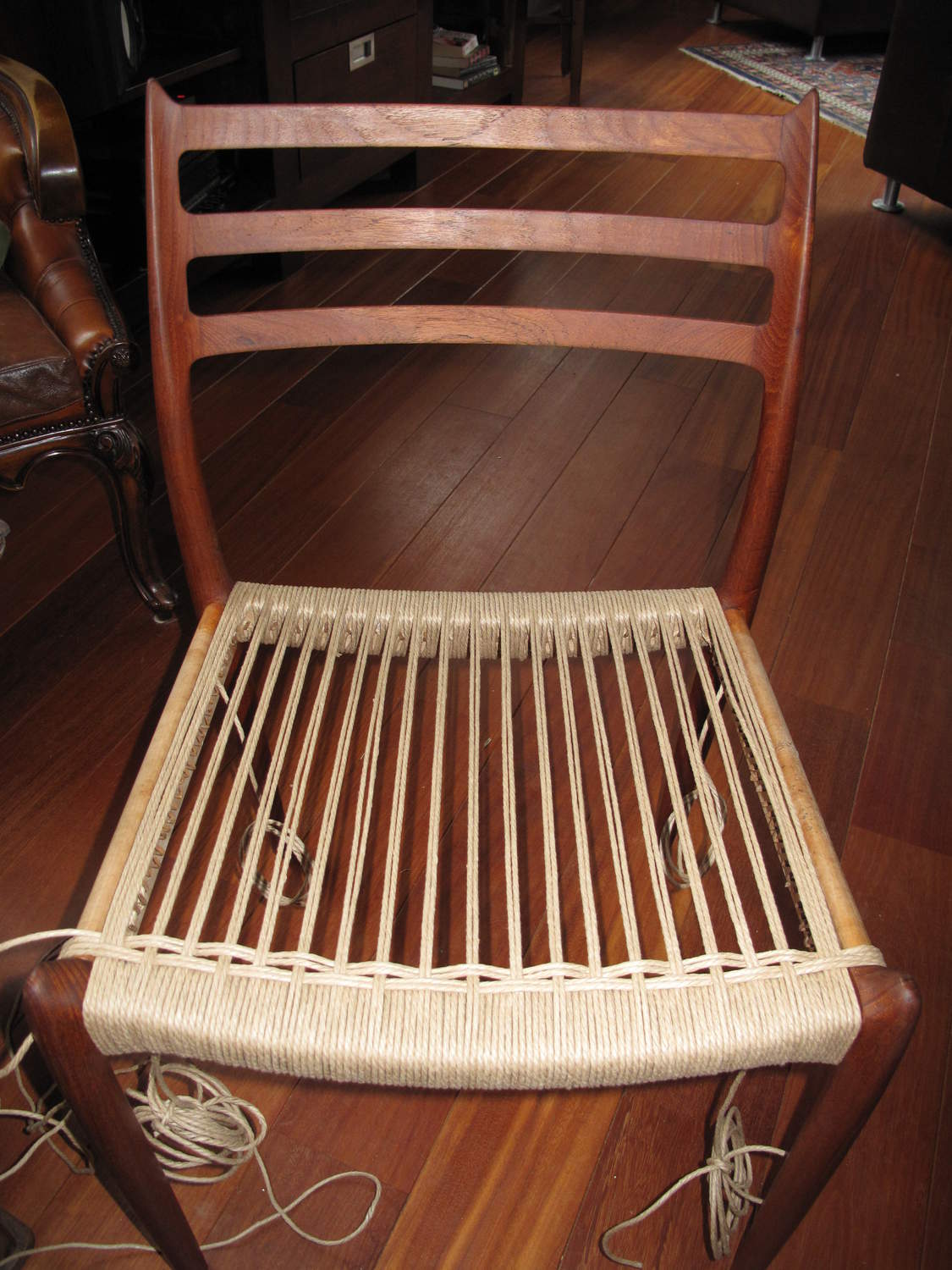
You need a certain amount of height to the side rails to accommodate the L nails on that kind of weaving. The drop-in frame would also need to be solid hardwood because the nails will eventually split anything else, especially when you don't have enough material so that you can stagger their placement. They will split even thick, solid hardwood rails over time if not placed optimally.
Also, unless you are doing this as a favor and you don't care how much you get paid, constructing a suitable drop-in frame will add a LOT to your time and materials list. That plus the cost of the weaving and you are close to what a nice vintage Danish chair with a woven seat will cost, at least where I live.
You could look into woven rattan or paper upholstery fabric for a natural woven look, then just staple it onto the existing seats (after removing that blue fabric, of course). But I'm not sure how well woven paper fabric will wear, and rattan might snag clothing made of delicate fibers.
That makes sense... the same person also asked me to weave the bottom area of this table (they want to remove the trays) and have that as a woven shelf - I suppose I could put a hard wood frame along the inside of the rails? They would be paying for the supplies and labour so at least it's not a freebie that I'd lose a week of my life on but mostly I am concerned about protecting the wood where it's visible.
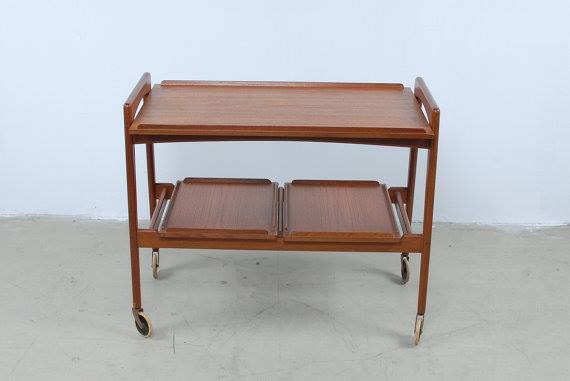
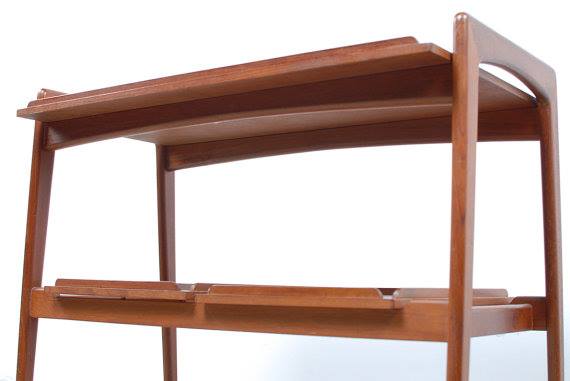
What the...? If someone asked me to do either of these jobs and especially both of these jobs, I'd kindly direct him or her to the nearest set of chairs designed for woven seats, because there are TONS of them out there. And like I said, you can still find some great bargains if you are patient and diligent. I totally get the attraction of woven Danish paper cord but in the words of the late great Omar Little---
Apropos of tha can somebody explain to me how the HW Klein chairs were woven EFFICIENTLY? I understand perfectly how to weave them, but with those side stretchers, you can not weave off the spool like you can with a Møller chair. You have to put your cord into a hank or on a shuttle and pass it through the gap. This adds a lot of time managing cord.
Also, unless you weave with two hanks at once, you have to weave the double weft twice, compared to the Møller where you weave a fold over in the cord through and get a doubled weft for free. So if you weave with two hanks you've doubled you cord management headaches.
Finally, if you are weaving with hanks, where do you hide the knots? There are two knots on the bottom there. If those are the only knots those hanks are two big to weave through. So th knots are hidden on the top side where the weft passes under a double cord warp?? So you additionally have to tie knots on with 0 tolerance for placement, which would be tricky, and either require lots of practice or lots of redoing.
These were not Wegner chairs where the name could justify extra time. HW Klein just was not that sort of name.
I don't get it.... What is the trick I don't see?
To watsonettes original question: this is how I would approach converting these chairs to cord if I were to do it. First the rabbet needs to be filled in to a smooth rounded over edge (cord will wear fast against the sharp too edge otherwise). You are going to do it møller style. Get Danish nails, the expensive real ones, not the clipped in half electrical staples. Plan out the pattern of nails going high, low as you go across the wood, or even better, high, mid, low. This keeps all the nails in different parts of the grain so that a line of nails down one grain line does not split the rail. Pre-drill the nail holes; this is more important than placement actually; don't skip it.
Expect a bit of fiddling with the cord as you go down the slopes in the rails. If you use a lot of tension, the friction of the cord on the rail will actually help you keep the cord in place.
I don't think the economics make any sense, but it can be done. (I don't know what premium you put on your time, nor do I know what premium the owner of the chairs puts on converting them to cord, so maybe the economics do work out).
Don't do it! Another thing to consider is that they may not end up comfortable even with the rabbet filled in. The front rail looks too thin to be comfortable. All chairs I've rewoven have a fairly thick and rounded front rail which takes quite a bit of the pressure when you are sitting on them.
I think it is a completely hare-brained idea, but with the proper tension on the seat, it should be springy, and the rails should not dig into the sitter's legs, even if the rails are thin. If the seat is woven like hammock, the the sitter feels the rails, and the cord becomes an uncomfortable seat.
Also, the rabbet can be filled to effectively widen the seat rails if that is actually necessary.
Again, I don't think this is a good idea, and it would only make economic sense if the doer wants to waste their time, or if the payer wants to throw absurd amounts of money at the project. And the end result will be devalued chairs, but it is possible to do it right, and comfortably etc. It just makes no sense.
I have always been better persuaded not to do something when I learn precisely what I would need to do in order to do that thing, and realize that it is not what I want to do. I have also "wasted" tons of my time doing things that seem worthless to most of the rest of the world....
If you need any help, please contact us at – info@designaddict.com



